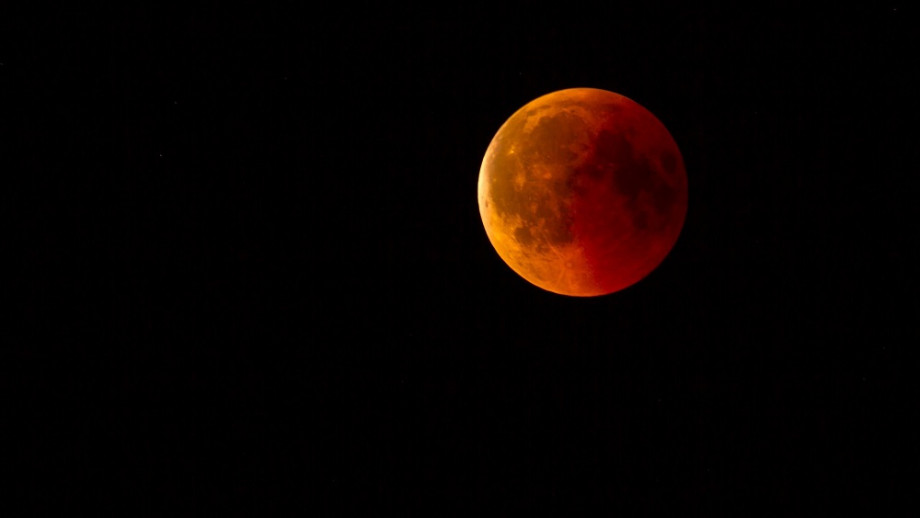A composite photo of a blood moon over Canberra. Photo: Rich Pixel Photography.
You might want to grab the mozzie repellent and head outside on Tuesday evening.
Our nearest celestial neighbour will glow a spectacular reddish colour for several hours from 8 pm on 8 November. It will be Canberra’s last chance to catch a glimpse of a blood moon, more commonly known as a total lunar eclipse, until 2025.
A blood moon occurs when the sun, Earth and the moon align in such a way that the moon passes into Earth’s shadow.
Dr Brad Tucker, an astrophysicist from the Australian National University (ANU), said this shadow was what caused the moon’s surface to turn red.
“While the Earth casts a shadow into space, a little bit of sunlight skims through the Earth’s atmosphere and into space,” he said.
“Just as sunrise and sunset are an orange or reddish colour, so is this light that skims through the Earth’s atmosphere and out into space. When you look at the moon during the total lunar eclipse, you are seeing the sunrise and sunset of the Earth lighting up the moon.”
According to NASA, the more dust or clouds in Earth’s atmosphere during the total lunar eclipse, the redder the moon will appear.
Lunar eclipses occur only during a full moon, although we don’t always get a total lunar eclipse during every full-moon cycle.

A total lunar eclipse occurs only every two and a half years. Photo: Andreas, Pixabay.
On average, there are three lunar eclipses every year, but only about 29 per cent of them are described as total lunar eclipses. These occur only every two and a half years.
“This is because the moon’s orbit is not always in perfect alignment with the sun and the Earth,” Dr Tucker said.
“The moon wobbles by about five degrees as it orbits around the Earth. For the moon to move perfectly into Earth’s shadow, it needs to be aligned with the Earth. Sometimes it just skims the shadow and we get a partial lunar eclipse.”
Canberra’s weather forecast for Tuesday is partly cloudy, with a medium (40 per cent) chance of showers, according to the Bureau of Meteorology (BOM). So there’s a high chance you’ll be able to see the blood moon.
No special equipment is needed either, although a telescope or binoculars are recommended to get the best viewing experience.
For the ACT and NSW, the best time to watch it unfold is between 8:09 pm and 11:49 pm. The total eclipse (when the moon is fully red) will last from 9:16 to 10:41 pm.
The blood moon will also be visible in New Zealand, the Americas and parts of Asia.
The next total lunar eclipse will take place between 13 and 14 March, 2025, followed by another between 7 and 8 September, 2025.
Original Article published by James Coleman on Riotact.

